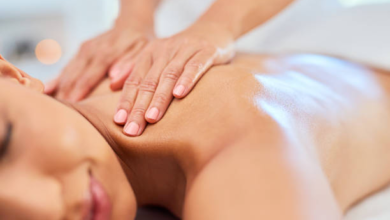
Achilles Tendon Rupture Treatment in Scottsdale: What You Need to Know
Introduction
Imagine playing a friendly basketball game on a sunny afternoon in Scottsdale. You make a quick jump, land hard, and suddenly feel a sharp snap at the back of your ankle. The pain is intense, and you realize something is wrong—you may have just experienced an Achilles tendon rupture.
This type of injury is more common than many think, especially among athletes and active adults. The Achilles tendon, which connects your calf muscles to your heel bone, is the strongest tendon in your body. Yet, under the right conditions, it can rupture in an instant.
The good news? With the right care and timely treatment, recovery is possible. At the Foot and Ankle Center of Arizona, specialists provide advanced treatment options for Achilles tendon rupture in Scottsdale, helping patients return to their active lifestyle.
What is an Achilles Tendon Rupture?
The Achilles tendon plays a vital role in walking, running, and jumping. When it ruptures, either partially or completely, the tendon fibers tear apart, limiting movement and causing severe discomfort.
A partial rupture may still allow some movement but is often very painful. A complete rupture, on the other hand, leaves you unable to push off your foot or stand on your toes.
Common Symptoms and Warning Signs
Recognizing the signs of an Achilles tendon rupture early is essential for proper treatment. Common symptoms include:
- A sudden sharp pain at the back of your ankle or calf
- A “popping” sound or sensation during the injury
- Difficulty walking or standing on tiptoes
- Swelling and bruising around the heel or calf
- Weakness in the affected leg
If you notice these symptoms, seeking medical care in Scottsdale quickly is crucial.
See also: Only Fiber: What Is Only Fiber and How Can It Benefit Your Health?
Causes and Risk Factors
Several factors can contribute to an Achilles tendon rupture, including:
- Sports injuries: Sudden bursts of jumping, sprinting, or pivoting (common in basketball, tennis, or soccer)
- Age: Tendons lose flexibility with age, making them more vulnerable
- Footwear: Wearing unsupportive shoes during physical activity
- Overuse: Repetitive stress or inadequate stretching
- Medical conditions: Previous tendonitis or certain medications that weaken tendons
Diagnosis: How Specialists in Scottsdale Detect It
When you visit a Scottsdale clinic such as the Foot and Ankle Center of Arizona, doctors typically begin with a physical exam. They may gently squeeze your calf to see if your foot moves (the Thompson test).
To confirm the rupture, imaging tests such as ultrasound or MRI may be recommended. These tools help determine whether the rupture is partial or complete, which directly affects treatment planning.
Treatment Options in Scottsdale
Non-Surgical Treatment
Not every Achilles tendon rupture requires surgery. For less active patients or partial ruptures, non-surgical treatment may include:
- Immobilization: Wearing a cast, brace, or walking boot to allow natural healing
- RICE method: Rest, ice, compression, and elevation
- Physical therapy: Gentle exercises to strengthen and restore mobility
- Medication: Pain relievers and anti-inflammatories
Non-surgical care is often chosen for older adults or those who prefer a non-invasive option.
Surgical Treatment
For younger or more active patients, surgery is often the preferred option. Achilles tendon repair surgery in Scottsdale involves stitching the torn tendon fibers back together.
There are two main surgical techniques:
- Open surgery: A larger incision for direct tendon repair
- Minimally invasive surgery: Smaller incisions, shorter recovery, and less scarring
Achilles tendon rupture treatment Scottsdale often provides stronger long-term outcomes, especially for athletes or those who want to return to high levels of physical activity.
Recovery & Rehabilitation
Recovery from an Achilles tendon rupture takes time, patience, and commitment. The process usually involves:
- Phase 1: Immobilization (First few weeks)
The foot is kept in a cast or boot to allow the tendon to heal. - Phase 2: Gradual weight-bearing (4–6 weeks)
Patients begin walking with partial weight on the injured foot. - Phase 3: Physical therapy (6–12 weeks)
Exercises to restore strength and flexibility. - Phase 4: Full recovery (6–12 months)
Returning to sports or active work once cleared by a specialist.
With proper care at the Foot and Ankle Center of Arizona, patients in Scottsdale can often return to normal activities stronger than before.
Why Choose the Foot and Ankle Center of Arizona?
When it comes to specialized foot and ankle care, experience and expertise matter. The Foot and Ankle Center of Arizona provides:
- Experienced specialists: Skilled podiatrists and orthopedic doctors focused on tendon injuries
- Advanced technology: Modern imaging and minimally invasive surgical tools
- Personalized care plans: Tailored treatment for each patient’s lifestyle and goals
- Trusted reputation in Scottsdale: Local patients rely on the center for effective recovery and compassionate care
Whether you’re an athlete looking to return to the game or a parent eager to walk pain-free again, this clinic offers solutions you can trust.
Conclusion
An Achilles tendon rupture may sound like the end of your active lifestyle, but with proper diagnosis, treatment, and rehabilitation, recovery is within reach.
If you live in Scottsdale and suspect a tendon injury, don’t delay. The Foot and Ankle Center of Arizona is here to provide expert care, ensuring you heal properly and return to the activities you love.
FAQs
Q1: How do I know if I have an Achilles tendon rupture or just a sprain?
A rupture often comes with a “pop” sensation and sudden weakness, while a sprain may cause mild pain and swelling without complete loss of strength.
Q2: How long does recovery from Achilles tendon surgery take?
Full recovery typically takes 6–12 months, but many patients can walk within a few weeks after surgery with the right rehabilitation.
Q3: Can an Achilles tendon rupture heal without surgery?
Yes, smaller tears or less active patients may recover through immobilization and physical therapy. However, surgical repair often offers stronger outcomes for active individuals.
Q4: Is Achilles tendon rupture common among athletes in Scottsdale?
Yes, athletes in sports that involve running and jumping are at higher risk, especially in warm climates like Scottsdale where year-round activity is common.
Q5: How soon can I return to sports after treatment?
Most patients can safely return to sports between 6 and 12 months, depending on their healing progress and therapy.
Q6: Does insurance cover Achilles tendon rupture treatment in Scottsdale?
In most cases, yes. Many insurance plans cover both surgical and non-surgical treatments. It’s best to check with your provider and the Foot and Ankle Center of Arizona for details.




